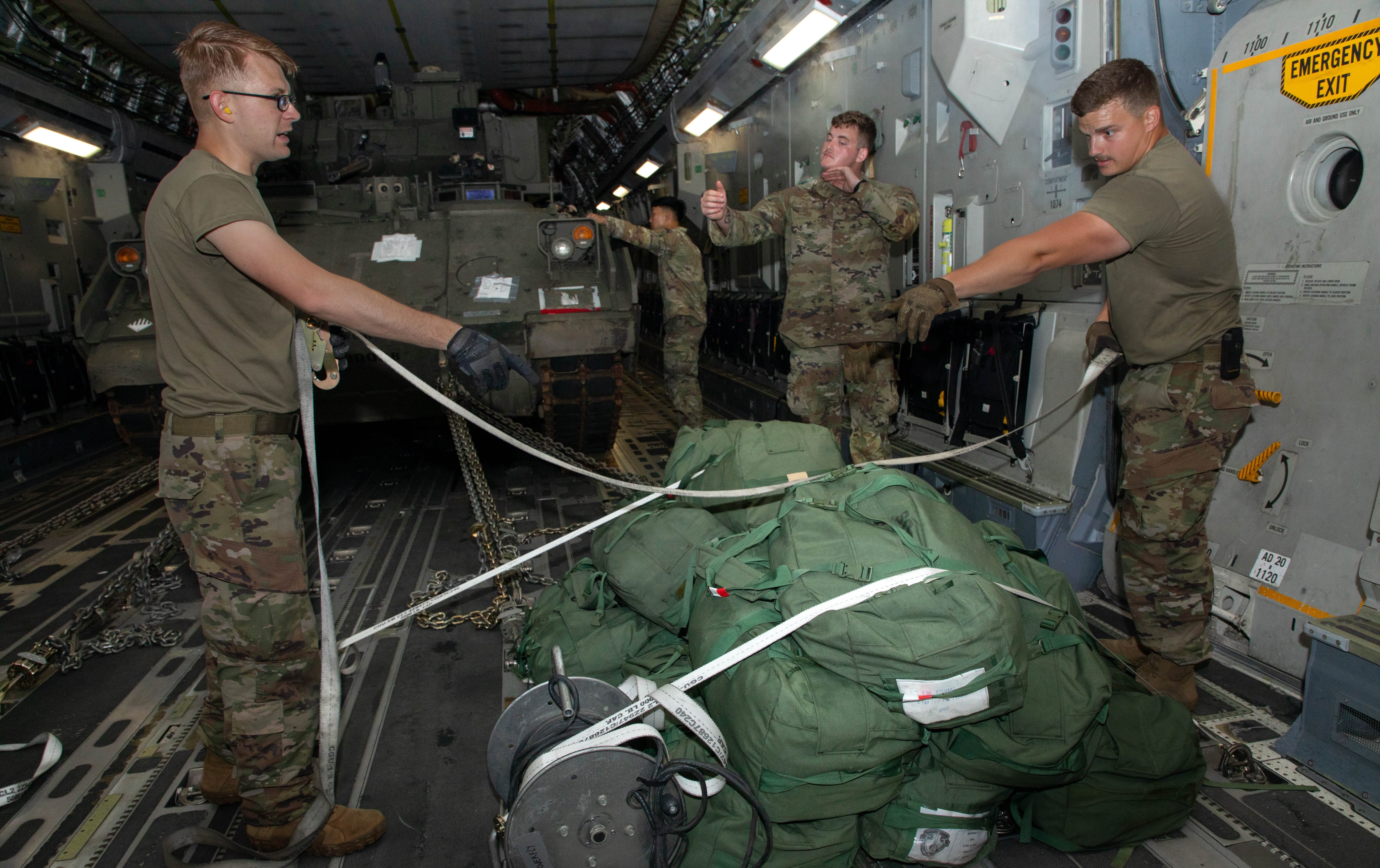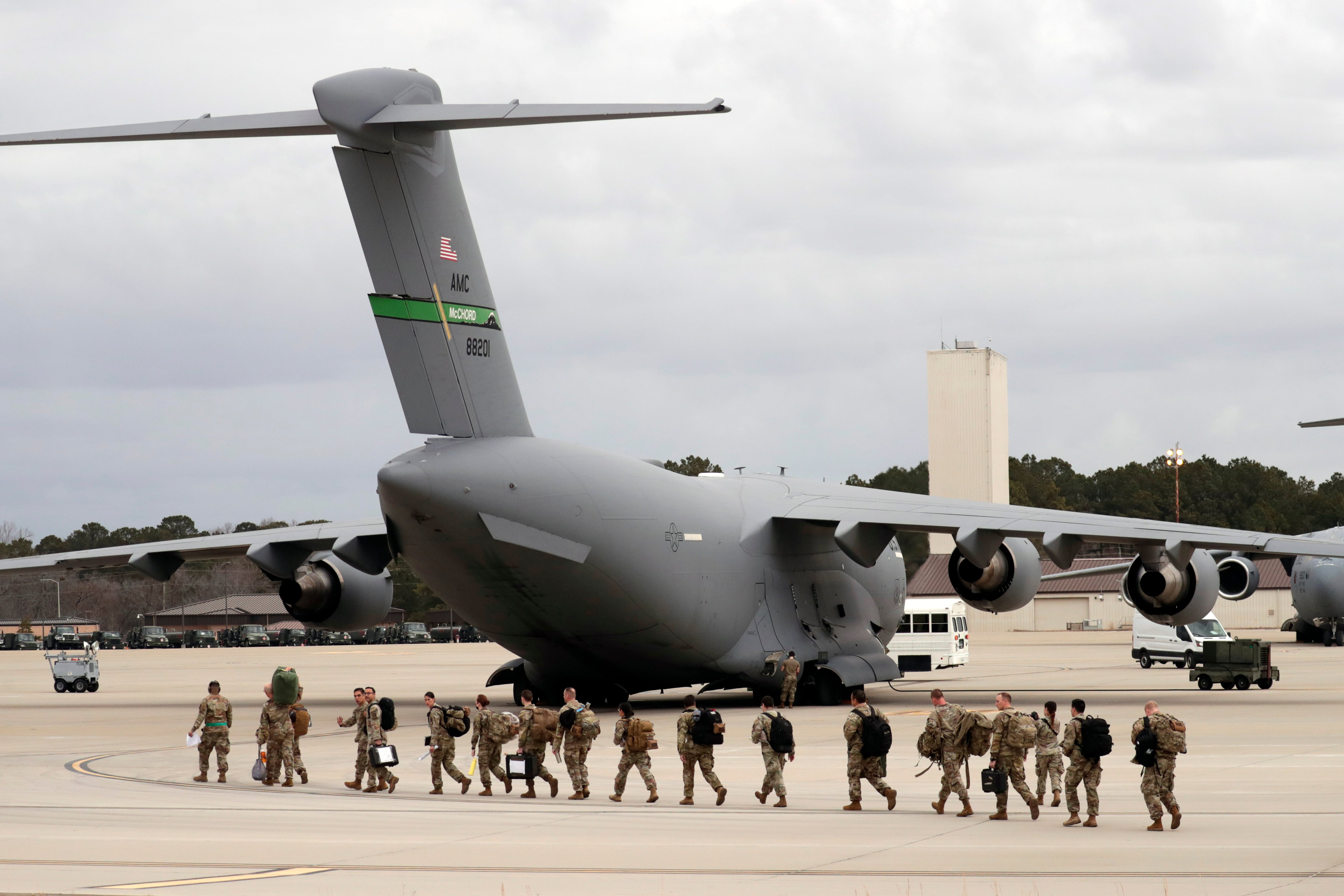Soldiers in the 3rd Infantry Division are prepared to deploy anywhere in the world, at any given point. This summer, they’re running a force deployment readiness exercise to practice that emergency capability.
A company-sized number of M2A4 Bradley Fighting Vehicles and approximately 60 personnel, along with fuelers, cargo trucks, Joint Light Tactical Vehicles and tracked vehicle maintenance vehicles are headed from Fort Stewart and Hunter Army Airfield, Georgia, to Fort Irwin, California, according to a spokesperson from the division.
After jointly working with the Air Force, the first element landed July 11, and the rotation will run through early August, they added.
The all-encompassing exercise tasks civilians and military personnel, who would participate in a real-world emergency deployment, with practicing their responsibilities on a compressed time schedule, during a training they didn’t necessarily know was going to occur, Lt. Col. Michael Hefti, battalion commander of the 5th Squadron, 7th Cavalry Regiment, 1st Armored Brigade Combat Team, 3rd Infantry Division, told Military Times.
“What makes this different is we’re going all the way across the country, and going straight into a tactical exercise at the National Training Center,” he said.
The C-17s transporting vehicles and troops also won’t land at a regular airport, but rather on an airstrip similar to those in real-world scenarios, he added.

The exercise for troops in “America’s Contingency Corps” offers an opportunity to test and streamline processes to move large and lethal equipment in a division that is no stranger to rapidly activating and deploying to or near some of the biggest conflicts around the world.
The mission to prepare the tailorable and scalable package came down from the 18th Corps commander in 2022, Hefti said, adding that at his formation’s level, troops need to be prepared to go within 96 hours — a window that he said was practiced in this exercise.
Making each element for the exercise work fluidly, especially that quickly, involved interacting with liaisons to installation and garrison counterparts, as well as civilian agencies, so that proper resources were available.
“Due to those coordinations there were a lot of lessons learned and best practices on how to overcome [challenges] in a real-world activation,” said Capt. Denny Song, a troop company commander with the 7th Cavalry Regiment’s 5th Squadron.
“Repetition and building the relationships with our installation support agencies has been key with overcoming those [challenges], so we can just keep getting better and faster at the process,” he added.
RELATED

Soldiers with the brigade combat team previously made their way to Europe as a part of the U.S. response to Russia’s invasion of Ukraine.
The 5-7 CAV has engaged in similar deployment readiness exercises in recent months, including a joint-training exercise with airmen in April that focused primarily on the timeliness of loading and unloading cargo, but that also allowed for rehearsing effective communication.
Jonathan is a staff writer and editor of the Early Bird Brief newsletter for Military Times. Follow him on Twitter @lehrfeld_media





